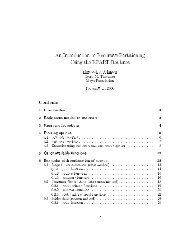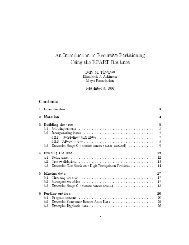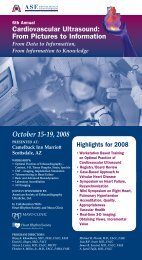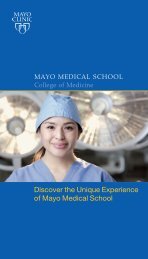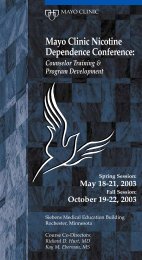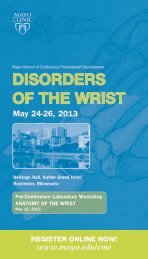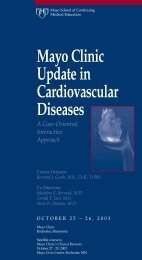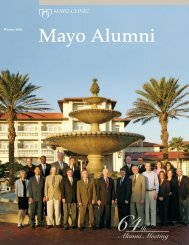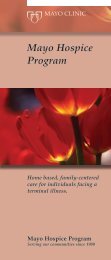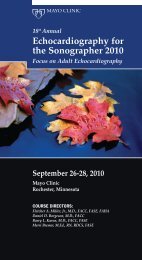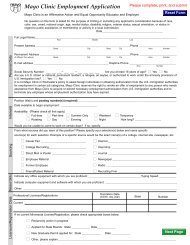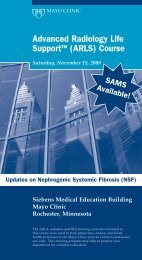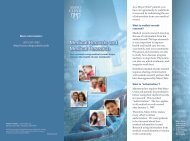Mayo Alumni Magazine 2002 Spring - MC4409-0402 - Mayo Clinic
Mayo Alumni Magazine 2002 Spring - MC4409-0402 - Mayo Clinic
Mayo Alumni Magazine 2002 Spring - MC4409-0402 - Mayo Clinic
Create successful ePaper yourself
Turn your PDF publications into a flip-book with our unique Google optimized e-Paper software.
Members of the<br />
microbiology team that<br />
helped develop the rapid<br />
anthrax detection test<br />
are, from left to right,<br />
front, Emily Vetter,<br />
Franklin Cockerill,<br />
M.D., Lynne Sloan and<br />
Tom Smith, Ph.D.<br />
Second row, Mark Espy,<br />
Jon Rosenblatt, M.D.,<br />
Lester Wold, M.D.,<br />
and Jim Uhl.<br />
procedure that improves patient care.<br />
Their story also illustrates how that<br />
process can be dramatically altered by<br />
events far beyond their laboratories<br />
— and far beyond their control.<br />
Turning weeks into minutes<br />
Since 1997 the microbiology team<br />
had been interested in developing<br />
ways to shorten the turnaround time<br />
for microbiology tests. Culture tests<br />
involve isolating the microorganisms,<br />
growing them on culture, and<br />
identifying them by the way their<br />
colonies grow on culture plates.<br />
Culture times vary and can be as long<br />
as three weeks.<br />
“If you can identify that a person<br />
has tuberculosis today instead of<br />
three weeks from now you can begin<br />
the right treatment immediately,”<br />
explains Franklin Cockerill, M.D.,<br />
chair of the Division of Microbiology<br />
and the microbiologist who led the<br />
development team. “And you can<br />
isolate the patient and stop the spread<br />
of disease.”<br />
Such advantages piqued the team’s<br />
interest in applying and improving<br />
polymerase chain reaction (PCR)<br />
testing to decrease the turnaround<br />
time of many diagnostic tests.<br />
PCR-based testing is a three-step<br />
process that was developed over the<br />
past two decades. First, DNA is<br />
extracted from the microorganisms<br />
in the sample.<br />
<strong>Spring</strong> <strong>2002</strong> <strong>Mayo</strong> <strong>Alumni</strong> 3



